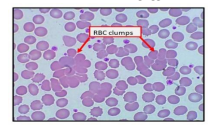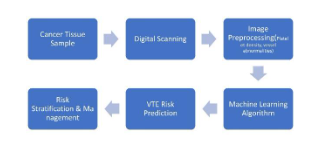An Audit of Histopathological Reporting Standards in TURBT Specimens at Queen Elizabeth Hospital, London
Fatma Mohammed Gouda Elsayed Shahin

Introduction:
Background: Accurate histopathological reporting of Transurethral Resection of Bladder Tumour (TURBT) specimens is essential for guiding clinical decision-making, staging, and multidisciplinary team (MDT) discussions in bladder cancer care. The Royal College of Pathologists (RCPath) dataset (August 2021) outlines mandatory core data elements that must be included in all TURBT reports. This audit aimed to assess compliance with these standards within a UK pathology department.
Aim: To determine whether individual pathologists and/or the department consistently report all required core data items for TURBT specimens in accordance with RCPath guidance
.Standards: 100% compliance was expected with the RCPath Dataset for Histopathological Reporting of Tumours of the Urinary Collecting System (2021).
Methods: A retrospective review was conducted on all TURBT specimens reported at Queen Elizabeth Hospital (QEH) between January 1 and July 1, 2023.
Inclusion criteria: All bladder tumour resections
Sample size: 53 cases Each report was assessed for documentation of the following parameters:
WHO 2004 tumour grading Presence of muscularis propria Lymphovascular invasion (LVI) Carcinoma in situ (CIS)
Results:
Complete compliance observed in 36/53 cases (67.9%)
Partial or non-compliance found in 17/53 cases (32.1%)
No clinical impact: 10 cases (18.8%)
With potential clinical impact: 7 cases (13.2%)
Key findings: WHO 2004 grading was missing in 12 reports; true non-compliance = 3.7% (2/53). Muscularis propria not commented on in 1 case. LVI undocumented in 49/53 cases, including 2 of 6 invasive tumours → true
non-compliance = 3.7%. CIS not documented in 3 cases (5.7%), with one explicitly stated as not assessable
Conclusion: While the majority of TURBT reports adhered to dataset standards, clinically significant omissions were noted. Parameters such as lymphovascular invasion, WHO grading, and muscularis propria status were most frequently overlooked. Use of structured reporting templates was associated with full compliance and is encouraged.
Recommendations: Raise awareness among pathologists about mandatory dataset elements Implement a unified proforma to ensure complete and consistent reporting. A re-audit is planned in 6 months to assess the effectiveness of implemented changes
Digital Formats: Any image file format that can be imported into this file will be acceptable for publication; to avoid technical problems, we suggest using PNG/JPEG format and mention Fig number with short detail.
References: The Royal College of Pathologists. (2021). Dataset for histopathological reporting of tumours of the urinary collecting system (renal pelvis, ureter, urinary bladder and urethra). [Online] Available at: www.rcpath.org [Accessed 28 July 2025].
WHO Classification of Tumours Editorial Board. (2022). Urinary and Male Genital Tumours. 5th ed. International Agency for Research on Cancer (IARC).
European Association of Urology. (2024). EAU Guidelines on Non-Muscle-Invasive Bladder Cancer. [Online] Available at: https://uroweb.org/guidelines/non-muscle-invasive-bladder-cancer [Accessed 28 July 2025].
Soukup, V., Capoun, O., Cohen, D. et al. (2017). Role of histopathological parameters in the management of bladder cancer: a consensus review. European Urology Focus, 3(4), pp.364–378. https://doi.org/10.1016/j.euf.2016.10.002
Biography: Fatma Mohammed Gouda Essayed Shahin, MBBCH With honors from Benha University, Faculty of medicine, Egypt, currently part of lewisham & Greenwich NHS trust organization , published 3 pubmed cited research
Presenting author details:
Full Name: Fatma Mohammed Gouda Elsayed Shahin
Category: (Oral/Poster Presentation/Workshop): poster
Track name:
Research interest:

#UCJournals #Histopathology #PathologyAudit #MedicalAudit #ClinicalAudit #UrologyResearch #TURBT #BladderCancer #CancerResearch #PathologyStandards #HistopathologyReporting #MedicalResearch #ClinicalPathology #SurgicalPathology #CancerDiagnosis #MedicalEducation #OncologyResearch #EvidenceBasedMedicine #Histology #PathologyDepartment #QualityInHealthcare #HealthcareStandards #PathologyAuditUK #ClinicalStandards #PatientCare #MedicalQuality #HistopathologyAudit #UrologyAudit #BladderTumor #CancerCare #DiagnosticPathology #PathologyResearch #MedicalJournal #AcademicPathology #SurgicalUrology #TumorBiopsy #PathologistLife #MedicalProfessionals #HealthcareAudit #ClinicalExcellence #PathologyCommunity #CancerDiagnosisStandards #Histopathologist #HistopathologyStandards #EvidenceBasedPathology #MedicalConference #ResearchAudit #BladderTumorResearch #OncologyAudit #HealthcareResearch #QueenElizabethHospitalLondon



